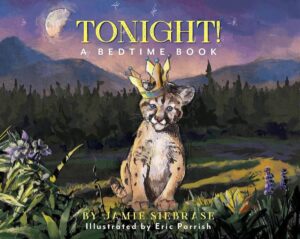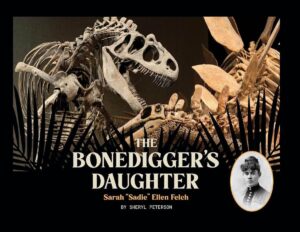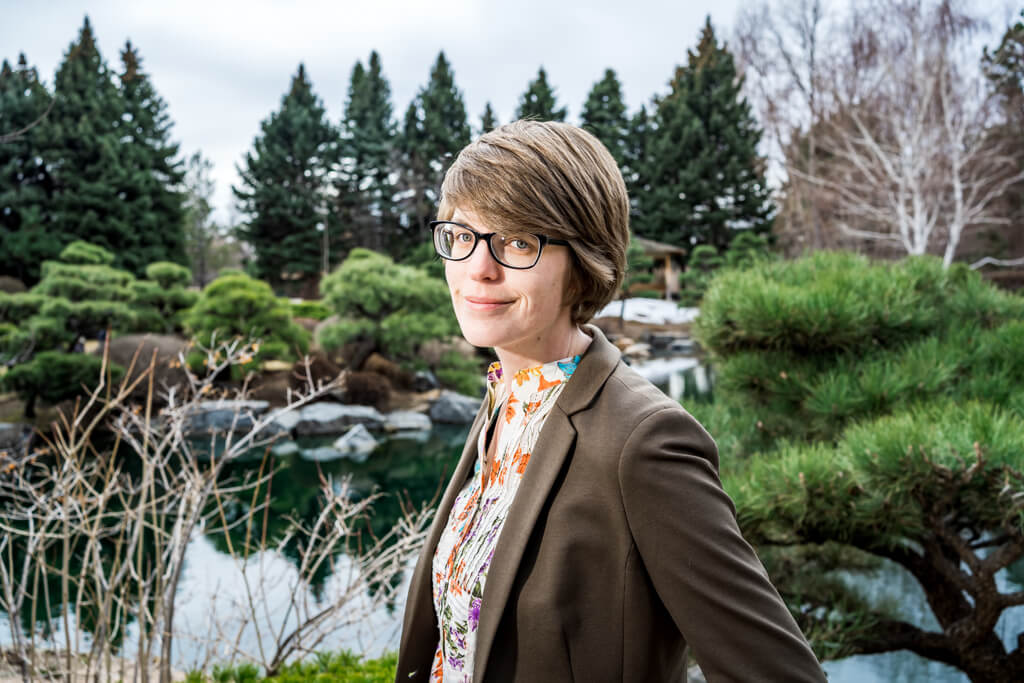Three children’s books evoke Colorado state of mind
A bedtime story, a geology primer and the untold tale of a dinosaur bone hunter
A bedtime story, a geology primer and the untold tale of a dinosaur bone hunter
Gifted children’s book writers accomplish what parents and teachers alone cannot; they get kids to love reading. Here are three recent books for children from preschool through age 8 and up, two by Colorado authors and one set in Colorado.
*****
Tonight! A Bedtime Book by Colorado author Jamie Siebrase is a welcome addition to the bedtime canon for young children. Each weeknight, a mother and son’s conversation leads to a nighttime world of animals and their habitats in the wild.
On Monday, Mom begins her goodnight with, “You’re my little prince,” and her child replies, “I’m not a prince… I’m a ______”. Evening after evening, the boy imagines he is another creature from mountain lion to lark to whatever wild animal he imagines.
Yet, the boy doesn’t embark on these other-than-human adventures alone; he asks his mother to join him, a pivot from many early childhood adventure books. This un-named boy resembles Max, the child in Maurice Sendak’s iconic Where the Wild Things Are (1963), a dark-haired boy adventuring during the night in his dream world. Max, declaring himself King of the World, dons a crowned hat. In Tonight!, the dark-haired, pajama-wearing, unnamed-boy also wears a crown of his own making when he imagines himself as a bighorn sheep.
Unlike Max in Where the Wild Things Are, this child is not sent to bed without supper, adventuring out of solitude from his bedroom. The boy in Tonight! invites his mother to join him, a moment of solidarity that an adult reader may pick up on, but a child listener may not.
On Thursday, Parrish draws the picture-book observer into the scene as the boy trails a rainbow-colored fabric tunnel, his mother a step behind him, which leads to the portal of their new imagined world.
On Saturday the boy draws a lone buck moose and inscribes “Dad” on his marker board. Yet, throughout the story “Dad” is clearly absent. The child asks his mother, “Mommy moose, will you strut into the snow bed with me?” She replies, “Of course. You’re my little calf, and I love you”. Mommy seemingly will always be by his side.
On Sunday, there is a sort of ring composition; the end returns to the beginning. Mommy leans in and whispers, “You’re my little prince.” Unexpectedly, that night her son accepts the label and replies, “And you’re my queen,” leaving his mother speechless.
Tonight! A Bedtime Book conjures a world of acceptance and togetherness in an imaginative world were both humans and other-than-humans live and love. Illustrator Eric Parrish’s accomplished drawings render a sweet world of mother and son relationships throughout the natural world. The book dares children to experiment in the natural world and to develop a familiarity with the habits of wildlife. This is reinforced in the last few pages with an addendum, “Wildlife Viewing Tips for First-Timers.”
Siebrase’s children’s book is perfect for parents and children this fall because the Denver Art Museum has a new exhibit opening October 13 and showing through December 28, 2024. “Wild Things: The Art of Maurice Sendak” will entice children of all ages, while Siebrase and Parrish’s Tonight! leads a new generation of children and their parents to explore where wild things are. — Shelli Rottschafer
Tonight! A Bedtime Book
by Jamie Siebrase, illustrated by Eric Parrish
Muddy Boots Books, 2023, recommended for pre-school to Grade 2
32 pages
*****
Carmela LaVigna Coyle’s delightful children’s book, Something Spectacular: A Rock’s Journey, proves that good children’s book writers combine research, deliberate syntax and diction, clear visual representation of events and ideas, and characters that matter to build not only a story, but an experience for the reader.
Coyle, a Denver-based writer who grew up in Littleton, is the author of Do Princesses Wear Hiking Boots, a picture book that grew from a conversation she had with her then four-year-old daughter. Since its publication, Coyle has written numerous books for children. Something Spectacular is her newest, published by Muddy Boots Books.
The book follows three story threads: First, the long and dramatic history of Earth, from ancient oceans to dinosaurs to bison to humankind. A graphic timeline at the bottom of every page—white bars of simple, but effective, illustrations—chart the major events of our planet. Second is the story of the rock itself as it’s transported and eroded and shaped through millions of years. And third, the core of the book and most active, is the story of a little girl, a character the reader doesn’t officially meet until the book’s end.
Statements at the top of each page indicate the amount of time between the events of the rock’s journey and the events of the little girl’s day hiking with her family: ~200 million years before she ate breakfast …; ~20 million years before she started hiking …; ~500 years before she stopped for a snack ….” This element juxtaposes the enormous drama of Earth’s history with the seemingly insignificant events of the girl’s life, allowing readers space to consider how moments big and small can lead to important change.
I read Something Spectacular with my seven-year-old daughter, and we spent a full 20 minutes reading the text, examining the pictures and going back to previous pages to help her understand the order in which things happened. We had a fantastic time. She adored the graphic timeline at the bottom of the pages and the beautiful illustrations. I appreciated the vocabulary, especially Coyle’s use of strong verbs, which afforded us multiple opportunities to pause and discuss what certain words meant. When we reached the end and my daughter saw that the rock we’d been following through millennia had been eroded into the shape of a heart, she gasped and said: “It’s like the rock is showing the girl how much it loves her!”
When talking with other parents over the years, I have heard so many times some iteration of, “I should write picture books. It can’t be that hard. I could write a book in 15 minutes that’s just as good as the books we pay $20 for.” Something Spectacular is the perfect example of how misguided that sentiment is. Coyle proves that good children’s book writers bring together multiple complex elements, and when they all work together successfully, the result is a picture book that both children and adults will enjoy and learn from. — Marissa Harwood
 Something Spectacular: A Rock’s Journey
Something Spectacular: A Rock’s Journey
by Carmela LaVigna Coyle, illustrated by Carly Allen-Fletcher
32 pages, recommended for readers 6-10 years old
Muddy Boots Books
*****
Sheryl Peterson’s newest book for young readers, The Bonedigger’s Daughter, recounts the true story of Sadie Ellen Felch and her family at the end of the 1800s, in and near Cañon City, Colorado. Not quite a picture book, it contains historical photos and factual snapshots throughout, familiarizing the reader with early excavations for dinosaur bones in the Rocky Mountain West.
Sadie, the daughter of Amanda and Marshall Parker Felch, lived with her family near Canon City (in those days, it wasn’t spelled with a tilde), where her father was a farmer. For much of her youth, Sadie roamed the hills around her home, gathering rocks for her collection. Close to her house was a large ridge of stone overlooking a dry riverbed, a location that would eventually become the Marsh-Felch Quarry #1. In that rock, Sadie and her father discovered numerous dinosaur bones. Acting as her father’s assistant, Sadie helped find the fossils, cleaned them, drew them in detail, and prepared them for shipment across the country to Professor March at Yale University.
Many of these discoveries were significant contributions to the field of paleontology—in 1886, Marshall Felch discovered the first nearly complete skeleton of a stegosaurus, on display today at the Smithsonian Museum of Natural History.
Sadie’s story is fascinating, and the photos of her home and her family give the reader an up-close look into Colorado’s past. Over several evenings I read this book with my daughter, and she was able to see how important a young girl’s actions can be to the entire world. The story is written like historical fiction, which makes the events more engaging for young readers.
A moment near the end of the book gave me pause. When Sadie is older, she travels to Yale to visit the professor and see the bones in the university museum that she’d found and cared for. When she locates them, she notices that none of the fossils are attributed to her father or herself. Riding the train back home, she thinks about this deliberate oversight: “Sadie decided that it didn’t really matter who received credit for digging up the fossils, sketching them, or naming the species. It was all ‘important work,’ as Papa said.”
I stopped reading, turned to my daughter, and asked, “If you found a dinosaur, wouldn’t you want to get credit for the discovery?”
She thought for a moment, then said, “If I find a dinosaur, I want it to be a fossil instead of alive. That way it won’t eat me.”
And that, I suppose, settled the matter. — Marissa Harwood
The Bonedigger’s Daughter
by Sheryl Peterson
Filter Press, Westcliffe
40 pages, recommended for reader ages 8 and up
While Marissa Harwood was born in Omaha, Nebraska, she moved to Colorado when she was four days old and considers herself a native. She grew up in the shadow of the Rocky Mountains and spent much of her childhood camping, hiking and building forts in the woods. She earned a BA in English and a Secondary Teaching License from the University of Colorado at Boulder. Later, she attended Western Colorado University and earned an MFA in genre fiction. She has taught English at three K-12 schools and two Colorado colleges. Currently, she lives in Greeley, where she teaches high school, plays with her daughter (a true CO native) and reads a lot of books. She hopes to earn a doctorate in the near future.
Click here for more from Marissa Harwood.
